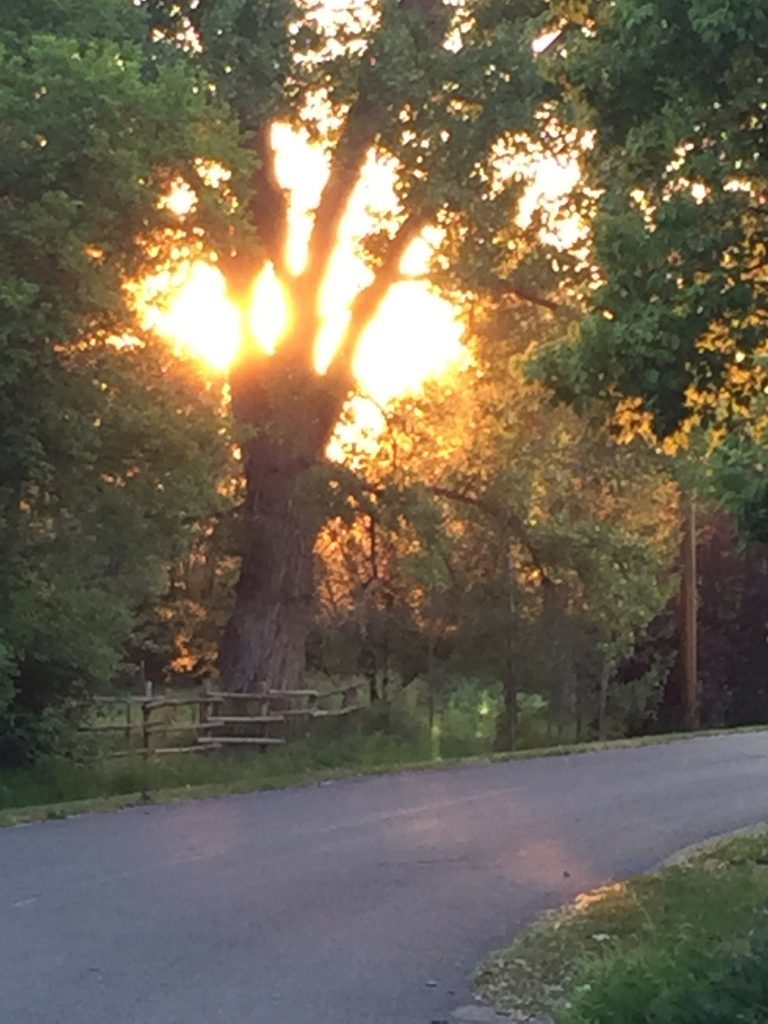
Highly sensitive people are physiologically wired to look for what’s wrong or amiss. While this hypervigilence once served us and our community extremely well when we were living in the outback or jungle and we were the first to scan the horizon to notice the slight wisp of smoke that signaled that a band of marauders was a few miles a way or the slight change in grass the indicated a tiger around the next bend, this evolutionary advantage can feel like a curse in modern culture. It’s fair to say that at least one element of modern anxiety is our evolutionary advantage, the part of our brains that kept entire villages alive, left hanging. As it’s primary job has been taken away, it now swerves into the path of least resistance, which often looks like scanning the inner horizon for danger: Am I with the right partner? (Is love safe?); Will I harm someone? (Am I safe?); Will I have enough money? (Am I secure?) Do I have a terminal illness? (Is life safe?) Is the planet going to be okay? (Are we all safe?)
You can see the through-line in these perseverations: the need for safety and security. At the core of intrusive thoughts is the need for safety. We need to know that we’re okay. We need to know that, no matter what, we will be taken care of.
For many of my clients and course members, once their relationship anxiety eases and they’re able to name their projections, correct their distorted expectations about love, and attend to their pain at the level of root cause, their anxiety attaches onto the next storyline, which is often health. For others, the hat of anxiety hangs on the whack-a-mole of storylines – relationship, sexuality, health, money, death – within the same day and sometimes within the same hour. However and whenever your anxiety manifests, worrying about health, death, and struggling with change are the modern-day equivalent of scanning the horizon for a threat. What we’re being asked now is how to re-channel this healthy evolutionary advantage of hypervigilence into its next incarnation in a way that serves us and others instead of keeping us trapped in the torture realm of the anxious mind.
How do we do this?
We do this by attending to the core need that anxiety presents, which, as I’ve said, is the need for safety and security. And we find the courage to recognize that at the deepest level what we’re talking about is the fear of death. When we spiral into health anxiety we find the fear of death. When we chip away at money anxiety we see that the fear of death lies at the core. So we come now to the deepest fear that human beings must face, and one that our modern culture fails miserably at helping us to contain in healthy ways. In other cultures and other eras, this primal and universal fear was contained through time-honored rituals, ancient myths, and being held in the web of the community. We have none of these soul-soothers available to us, which means we’re left to create our own attempts at finding footholds into the ever-changing landscape of being human. Enter: anxiety and intrusive thoughts.
As always when working holistically with anxiety, we address the foundational layer and we work with on-the-spot tools to help rewire our habitual fear-and-panic response to symptoms or triggers. For those of you currently suffering from health anxiety, I want to offer an effective on-the-spot tool to facilitate this rewiring. In these moments, we need cut-through questions that loosen fear’s stronghold. If you’re wired toward anxiety, fear will almost always be your default response to a new feeling, thought, or symptom. So we have to have questions immediately ready to create new neural pathways and change the fear-track.
One of the best questions to ask when fear takes over is, “What else could it be?” For example, one night I woke up with a new pain in my side, and my first thought was, “It’s ovarian cancer.” The thought was so immediate that it felt like it was coming from my well of Knowing, not from Fear. But that’s the trickiest part about fear: it can sound so certain and real. Because I know my mind as well as I do, I didn’t hook in and instead asked, “What else could it be?”
Once you ask the question, you can then approach the sensation through the lens of curiosity. When I approached the pain in my side from another angle and asked “What else could it be?” I heard a quiet voice say, “My ovaries are sad.” As soon as I heard those words, my body dropped down several notches. My ovaries were, indeed, sad as they were preparing to walk through the portal of ending their primary function in my body. They were going through a death experience as they began to close down shop and stop releasing eggs each month. I could latch onto the literal interpretation of cancer or I could sink into the metaphor that this part of my body was dying, an aspect of my life and identity as a childbearing woman was dying, but my physical body was not dying.
The same process can be applied to any type of anxiety. A thought about your partner or about your job darts into your mind and you immediately believe it. A friend says something and you immediately interpret it in the worst possible way. Or you have a feeling or sensation and you immediately interpret it through a catastrophic lens (I’m dying). If, instead, you develop the habit of asking the cut-through question, “What else could it be?” you’ll diffuse the power of fear.
The path through anxiety is fundamentally about learning to unhook from the fear-stories and choosing to walk along another road, one that includes a great deal of curiosity and tenderness at the core.
Originally published at conscious-transitions.com


